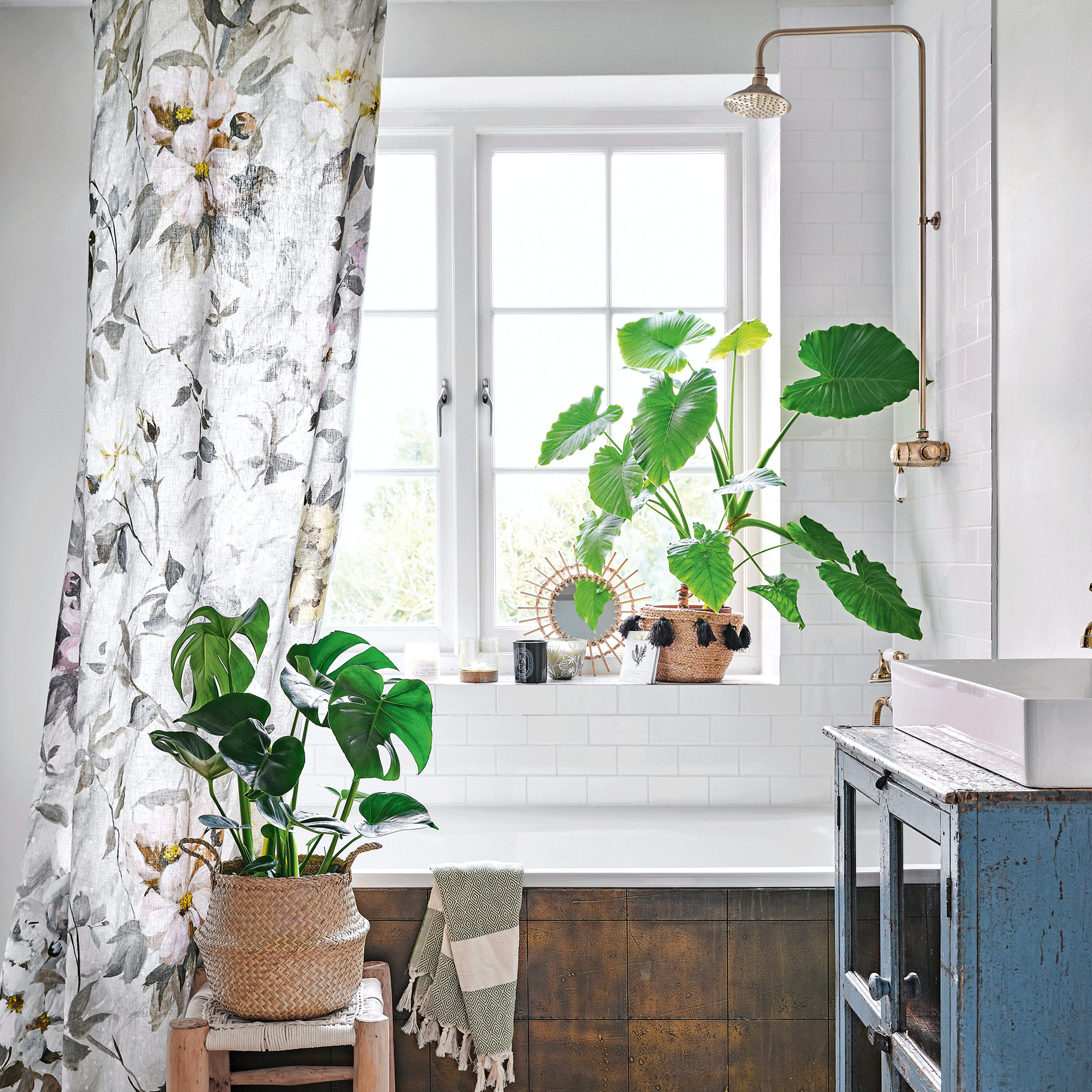Charlie Luxton on why you need to buy an air quality monitor for your home
Ideal Home's renovation expert reveals why you really shouldn't overlook your home ventilation


The average person in the UK spends 92% of their time indoors, the majority of which is spent at home. Understanding and controlling the air quality in your home is really, really important.
For a long time I’ve been acutely aware of both VOC’s (volatile organic compounds) and formaldehyde, two of the key offenders in poor air quality. A recently fitted carpet, a room redecorated or new furniture can be high in the aforementioned chemicals and cause me to have irritated eyes, a runny nose and in extreme situations asthma-like chest tightness.
We bring hundreds of chemicals into our homes via fixtures and furniture but also cleaning products, paint; pretty much anything man-made. A surprisingly small number of these chemicals have been tested for long term health impacts and there’s been almost no research into the resultant chemical cocktail that we live with as they mix together. Repeated reports show that a significant number for homes exceed safe levels of both VOCs and formaldehyde.

A second area that seriously impacts internal air quality, and therefore health, is moisture. We live on a damp island. In addition to the vast quantities of rain we get, showers, cooking and drying clothes all introduce yet more moisture into our homes which often results in humidity exceeding 40%-60% RH (Relative Humidity), which is the recommended level. If this happens for extended periods then the chances of mould growing in your home increases massively and certain common moulds are very, very bad for us.
So far… so depressing… but these problems once understood are relatively easily to improve, principally by ventilating your home properly.
The first step wherever you live is to establish your current air quality. This can be done with one of the many home air testers that are readily available. They start at around £70 and measure humidity, carbon dioxide, carbon monoxide, VOC’s, temperature and particulates of differing sizes amongst many other indicators. If any of these levels are higher than recommended, you need to act!

Being careful about the products, paints and materials you bring into your home will undoubtedly help, but the key way to improve air quality is through ventilation. Fresh, clean air will dilute the build-up of any chemicals or moisture and provide lots of oxygen to help you stay alert and healthy.
There are two main strategies for ventilation; mechanical ventilation or uncontrolled ventilation.
Mechanical ventilation, to my mind, is the best route in order to ensure that you are getting the right amount of fresh filtered air to the right places in your home. Mechanical Ventilation Heat Recovery (MVHR) is the system I try to use wherever possible.
With MVHR, damp stale air from your bathrooms, utility and kitchen is constantly extracted via ducts to a central unit where it goes through a heat exchanger to pre-warm fresh, filtered air that is pumped into bedrooms and living spaces. Sensors monitor humidity, VOC’s and CO2 and boost the flow accordingly to maintain healthy levels. The energy used pumping the air around is much lower than the energy lost from dumping warm stale air so MVHR is a core part of Passivhaus low energy design. It can be fitted to existing houses but it’s a significant undertaking and requires quite a lot of space, and decent levels of airtightness to work properly. If you are thinking of doing a whole house refurb then this should be your starting point.
There are other methods providing controlled ventilation which are cheaper and less invasive but come with other compromises.
Mechanical Extraction Ventilation (MEV) uses a centralised extractor unit connected via ducts to all the moisture producing areas in your home; kitchen, utility and bathrooms. Having extracted damp stale air from these rooms, it extracts it outside dropping the internal pressure and in turn drawing in fresh air. The units can monitor moisture levels and respond accordingly to keep your home at the right humidity. Installation does require ducts be run through the building to necessary rooms which usually involves pulling out some ceilings but once installed it should be quieter and more effective than individual room extractor fans.

Positive Input Ventilation (PIV) draws in external air, often via your loft void or through a wall where it is filtered and heated before being pumped at a constant rate into the home. Usually introduced into a hallway, the air increases pressure inside the building pushing stale damp air out of the gaps and cracks. The units are quite small and can be located discreetly in loft voids where alongside some limited ducting can make a big difference to the upstairs rooms in your home. There are questions raised about the amount of fresh air that is directed downstairs or to rooms further from the unit but if you’re not planning a big renovation this route can improve the ventilation with minimal disruption.
If controlled ventilation is not an option, uncontrolled ventilation is basically a series of holes in your building that allow air in and out and for the vast majority will be the chosen option. The holes are usually the gaps found in most homes that allow for drafts or in more modern homes, trickle vents or air bricks. It relies on pressure differentials around the building to pull in fresh air.

There are a number of issues with this strategy. It is hard to know how much ventilation you are getting and if it is going to the right places. If it is very still there may be almost no air movement, or if it is very windy, way too much. This lack of control also leads to significant heat loss as your lovingly warmed air is replaced by cold fresh air, raising your heating bill. However, if you seal up all those gaps and drafts, the moisture builds up and there’s no oxygen!! It’s a tricky balancing act.
There are however a few ways uncontrolled ventilation can be made better. Nearly all houses have extractor fans in bathrooms, utility rooms and kitchens which augment general ventilation. Rather than relying on these being turned on/off manually or coming on automatically with a light, install fans that have a humidity sensor. This can make a big difference because as moisture levels get high the fan comes on and extracts the moist air drawing in fresh air from outside. Once the humidity levels drop it stops.
Getting some control over where and when you need to ventilate is the key. The air quality monitors mentioned above are perfect to help work out when to open trickle vents or crack open a window. Engaging with them will help you become aware of how your internal air quality changes according to your actions, the seasons/weather and how to manage it. This may sound obsessive but so did home energy monitors a few years ago, now loads of people use them.
Get the Ideal Home Newsletter
Sign up to our newsletter for style and decor inspiration, house makeovers, project advice and more.

Charlie Luxton is an architectural designer who juggles his roles as director of Charlie Luxton Design, TV presenter and public speaker. Charlie regularly gives talks and presentations to a wide range of audiences about all aspects of the built environment and sustainability.
Charlie is passionate about the environment and communicating his enthusiasm for sustainable architecture and design. He has combined his design work with writing and presenting television programmes for the last twenty years and fronts Building the Dream and Homes by the Sea for More4, amongst others.
-
 How to clean a stained toilet bowl - experts reveal the best cleaning hacks for a sparkling loo
How to clean a stained toilet bowl - experts reveal the best cleaning hacks for a sparkling looYes, a pumice stone is on this list…
By Lauren Bradbury
-
 Sam Thompson and Zara McDermott's 'brilliant design choice' redefines the ordinary all-white kitchen, say experts
Sam Thompson and Zara McDermott's 'brilliant design choice' redefines the ordinary all-white kitchen, say experts'It's a design strategy that effortlessly marries style with substance'
By Jullia Joson
-
 Can you plant bulbs in January? Garden experts have warning if you're planting spring bulbs late
Can you plant bulbs in January? Garden experts have warning if you're planting spring bulbs lateHave you missed the boat?
By Lauren Bradbury


